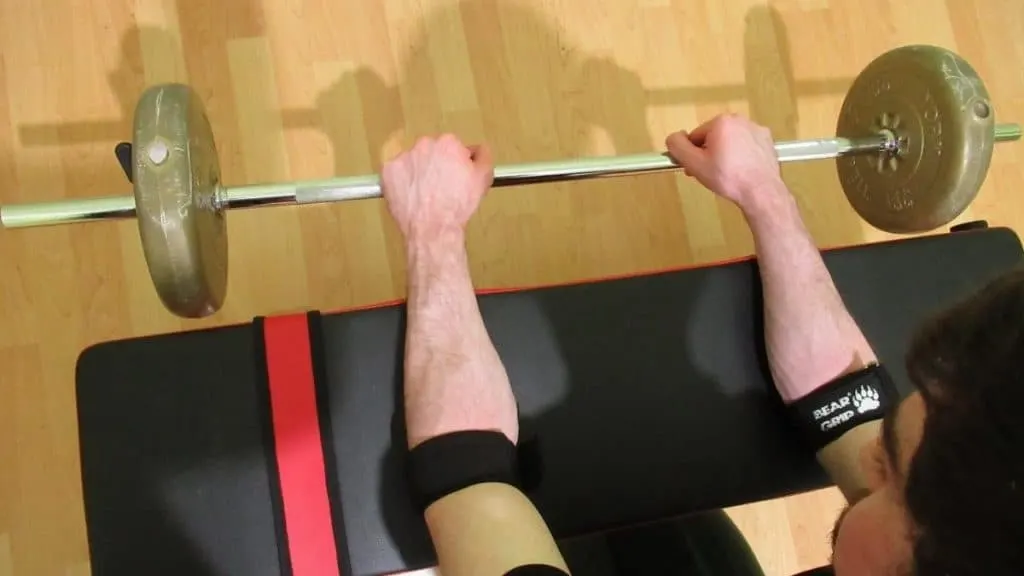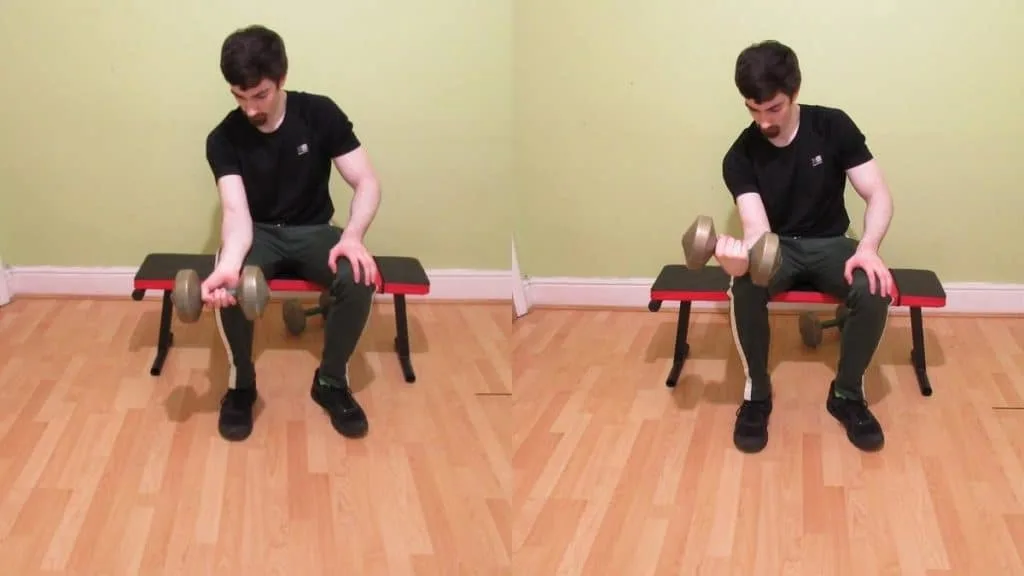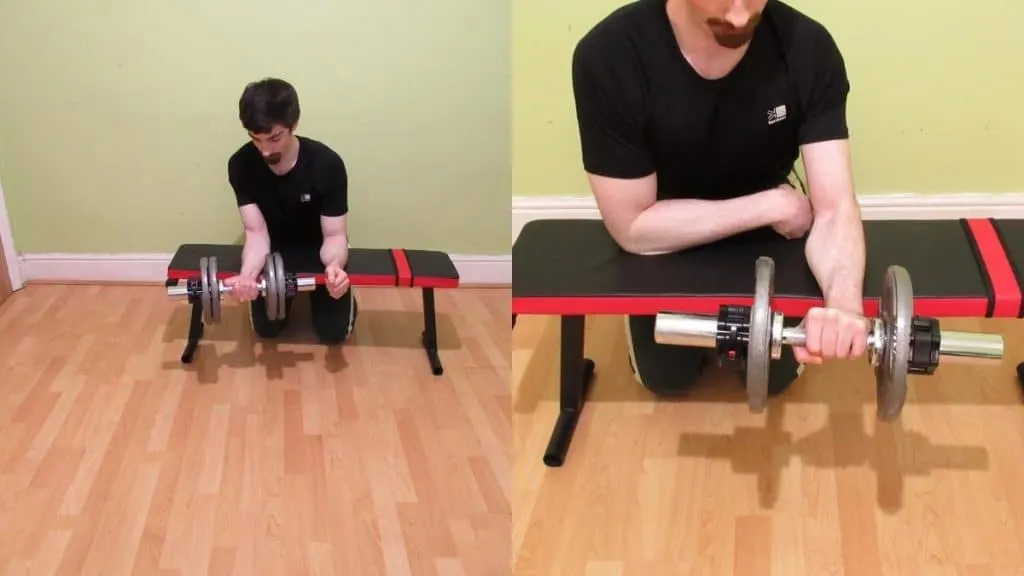The forearm is a body part that’s heavily used in everyday activities. From lifting heavy furniture to scrolling on our phones, we massively rely on our forearms to function in the world.
Yet, when you’re working out how often to train forearms, you can quickly become confused because there’s so much conflicting advice.
Some old-school bodybuilders recommend a training frequency of once per week so that you have plenty of time to recover.
Others recommend a high training frequency to take advantage of more frequent protein synthesis spikes.
There are also many exercise scientists and physiologists who recommend a more moderate training frequency. We’ll cover all points of view, including the pros and cons of each, in this complete forearm guide.
Related posts: Do I need separate forearm exercises? │right forearm bigger than left
How often can you workout your forearms?
First and foremost, it’s crucial that you determine your current level of advancement, also known as your training age. This is determined on a per muscle basis, and most people usually end up as either a novice, intermediate, or advanced trainee.
It’s also entirely possible, for example, to have forearms that are in the advanced stage but a chest that’s still of novice-level development.
It’s equally important to realize that what’s advanced for me might not necessarily be advanced for you. These training ages are all in relation to your individual genetic potential.
Once per week

If you’re new to training forearms, then a workout frequency of once per week will produce some significant gains while still providing ample recovery time.
I highly advise a forearm training frequency of once per week for beginners because if you work them more often, then the soreness could interfere with your back and bicep workouts.
If they’re a weak point for you, i.e., your other muscles are more advanced, then you can also work your forearms in their own session. However, most people will see good results from training them at the end of a regular session.
Just try not to train back or arms the day after a forearm session if you can help it.
Twice weekly

Many researchers and personal trainers agree that a training frequency of twice per week is an improvement on once per week frequency. [1] This is because protein synthesis doesn’t last for a whole week. As such, by bumping up the frequency, you’re now getting two stimulations of protein synthesis each week rather than just one.
Note that this doesn’t mean you’ll get twice the muscle growth. While there are some studies showing benefits to a higher training frequency, others show no difference or even worse results.
Three times a week

As I mentioned in the introduction, we use our forearms for so many tasks and activities that they’re actually able to handle quite a lot of work.
Many manual labourers, for example, use their forearms virtually everyday at their jobs without any issues.
However, there’s a great difference between using your arms to perform manual work and training them to absolute failure with weights. The latter is much harder to recover from. So if you’re training within close proximity to failure, then a frequency of 3 times per week is likely too high.
If, however, you can avoid the temptation to obliterate your forearms every session, and if you’re also gaining strength somewhat consistently, then a 3 x per week frequency may actually be viable.
Just be sure to keep the per session training volume reasonably low (2-3 sets for both the flexors and extensors). Otherwise, you might find it difficult to complete your back training without your grip giving out.
Every training day

Training a muscle every workout doesn’t mean that you actually work it everyday. For example, when figuring out how often to train forearms, you might come up with the idea to do little feeder workouts where you hit them after your main body parts for that day.
This type of training can get quick results. But it’s arguable whether the size gain is actually new muscle tissue or just cell swelling from the pump.
Daily

Training forearms everyday relies on you having an excellent recovery capacity. You’ll need to get plenty of sleep and eat a high protein diet to cope with such a routine. However, for a body part as small as the forearms, daily training is actually possible for many people. After all, as I said before, many people already do it at their jobs, anyway.
Plus, a set of wrist curls is way less taxing on the body systemically than a set of squats. Therefore, if you stay a good 2-3 reps away from failure on each set, then you may be able to get away with daily lower arm training if you’re already closing in on your genetic limitations.
For beginners and intermediates (so most people), this kind of frequency is overkill, and like I said, such protocols will backfire if you can’t recover from them. And in my experience, the wrist joints don’t always hold up well to high frequency or high volume training.
How often should beginners train their forearms?

Beginners should train their forearms 1-2 times per week. Start with one weekly session and enjoy the gains. Once your progress begins to stagnate (likely after around 6-9 months), then you can add in another session if you wish.
Bear in mind, though, that your forearms will also get worked during back and bicep training. As such, you may wish to only train your forearms directly once per week.
How often can advanced lifters train their forearms?

How often can you workout forearms as an advanced lifter? Well, you might be excited to hear that there aren’t any hard and fast rules. In other words, because you’ve developed your forearms to an impressive size already, you’ve earned the right to experiment with your training.
I still like a direct training frequency of twice a week for most trainees. [2] However, if you believe that you have the recovery capacity to tolerate a higher forearm frequency, then feel free to train them 3 times a week or more and see how you respond.
Read more: is your foot the same size as your forearm?
The verdict: How often to train forearms for the best results
Working out how often to train forearms doesn’t need to be complicated. [3] Most trainees will see optimal results from training their forearms directly 1-3 times per week.
There appears to be very little difference in results, based on the research, between once and twice a week lifting frequencies (per muscle group). Therefore, I recommend starting with once a week and then graduating to twice a week to see how you respond.
References
- Schoenfeld, B. J., Ogborn, D., & Krieger, J. W. (2016). Effects of Resistance Training Frequency on Measures of Muscle Hypertrophy: A Systematic Review and Meta-Analysis. Sports Medicine, 46(11), 1689–1697. https://doi.org/10.1007/s40279-016-0543-8
- Schoenfeld, B. J., Grgic, J., & Krieger, J. (2018). How many times per week should a muscle be trained to maximize muscle hypertrophy? A systematic review and meta-analysis of studies examining the effects of resistance training frequency. Journal of Sports Sciences, 37(11), 1286–1295. https://doi.org/10.1080/02640414.2018.1555906
- Grgic, J., Schoenfeld, B. J., & Latella, C. (2019). Resistance training frequency and skeletal muscle hypertrophy: A review of available evidence. Journal of Science and Medicine in Sport, 22(3), 361–370. https://doi.org/10.1016/j.jsams.2018.09.223

